As a landlord in the UK, it is crucial to ensure the safety of your tenants by complying with the latest regulations regarding electrical safety. One of the key requirements is obtaining a Landlord Electrical Certificate, also known as an Electrical Installation Condition Report (EICR). This document is essential for demonstrating that your property’s electrical installations are safe and meet the necessary standards. In this guide, we will outline the guidelines for obtaining and maintaining a Landlord Electrical Certificate in the UK in 2024.
Legal Requirements:
Ensure that you are aware of the latest legal requirements regarding electrical safety in rental properties. In 2024, it is likely that the regulations will still mandate landlords to obtain an EICR at least every five years or more frequently, depending on the type of property.
Qualified Electricians:
Hire a qualified and registered electrician to conduct the inspection and testing of your property’s electrical installations. The electrician must be registered with a competent person scheme recognized by the UK government, such as NICEIC, ELECSA, or NAPIT.
Scope of Inspection:
The electrician will assess the entire electrical installation in the property, including fixed wiring, sockets, switches, lighting, and distribution boards. They will check for any defects, wear and tear, or non-compliance with current electrical regulations.
Documentation:
Request a detailed Electrical Installation Condition Report (EICR) from the electrician after the inspection. This report will outline any issues identified during the assessment, categorizing them as either C1 (danger present), C2 (potentially dangerous), or C3 (improvement recommended). Address any C1 and C2 issues promptly.
Remedial Work:
If the EICR identifies any issues that require attention, ensure that you hire a qualified electrician to carry out the necessary remedial work. Once the repairs are complete, request a confirmation from the electrician and update the EICR accordingly.
Keeping Records:
Maintain a comprehensive record of all EICRs, including their dates, findings, and any remedial work carried out. This documentation is crucial for demonstrating compliance with electrical safety regulations and providing evidence of due diligence as a landlord.
Communication with Tenants:
Keep open lines of communication with your tenants regarding scheduled electrical inspections. Provide them with sufficient notice, and ensure that the electrician has access to all necessary areas for a thorough assessment.
Regular Inspections:
While the legal requirement is typically every five years, consider conducting more frequent inspections to ensure the ongoing safety of your property. Regular checks can help identify potential issues before they become serious concerns.
Penalties for Non-Compliance:
Familiarize yourself with the potential penalties for non-compliance with electrical safety regulations. Failure to adhere to these regulations can result in fines and may impact your ability to let your property.
Conclusion:
Prioritizing electrical safety in your rental property is not only a legal requirement but also a fundamental responsibility as a landlord. By following these guidelines for obtaining and maintaining a Landlord Electrical Certificate in the UK in 2024, you demonstrate a commitment to ensuring the well-being of your tenants and complying with the latest electrical safety standards.




